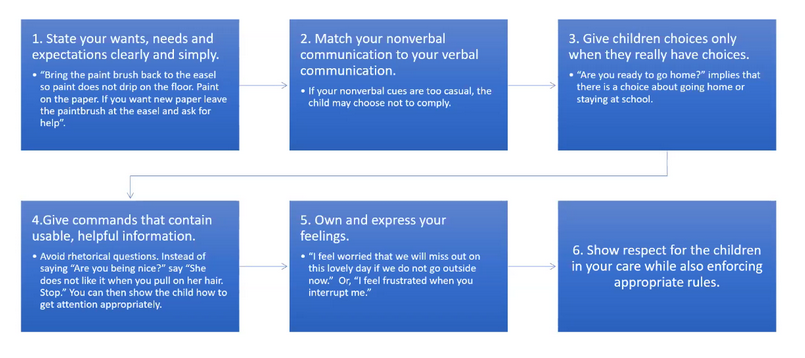
Endeavor Schools Begins Webinar Series for Parents Hosted by Dr. Amy Brereton
Endeavor Schools held its first live webinar for parents this month with a presentation on how parents can use positivity to improve their child’s behavior.
The webinar was presented by Dr. Amy Brereton, the Executive Vice President of Academics at Endeavor Schools, and was the first in what will be an ongoing webinar series for parents about using informed and researched techniques at home for maximizing child development.
This inaugural presentation focused on developing tools to guide children’s behavior toward positive outcomes.
Dr. Brereton began by reiterating the difference between “discipline” and “punishment.”
While punishment reprimands a child for undesirable behavior, discipline creates the opportunity for a child to understand why certain behavior is undesirable and what is the better course of action.
“We often use these words interchangeably, but they’re not the same thing,” she said.
And keeping in mind the difference between the two can help in guiding your child’s behavior.
Be a STAR
When a situation calls for discipline, it’s often not a pleasant one. Whether the child made a big mess or threw a tantrum in public, parents can experience distress, anger, or frustration. In these times, it’s crucial to maintain a cool head and “Be a STAR.”
STAR is an acronym for:
Smile
Take a deep breath
And
Relax
Developed by Dr. Rebecca Bailey, an expert in childhood education and developmental psychology and the creator of the Conscious Discipline theory of social and emotional learning, STAR is a crucial and easy to remember tool to have when you need it in stressful situations, whether it’s parenting-related or anything else.
“This is rooted in brain science,” Dr. Brereton said. “When we get worked up, we leave the ‘thinking’ part of our, the prefrontal cortex, and we go back into the emotional centers of our brain making it difficult for us to think rationally.”
However, by centering yourself, you can regain control and get back into a proper headspace to deal with whatever challenge is before you.
Smiling lets you know everything is okay. Taking a deep breath puts some extra oxygen into your body to calm down and relax. Once you’re in a more relaxed headspace, you’re in a better position to handle the situation in a positive manner.
Avoid Fear-Based Measures
Parents are aware of how physical punishment can negatively impact children, but the remnants of those fear-based techniques still exist. From raising one’s voice or making empty threats, using fear to instill discipline can still have negative psychological and physical repercussions, as well. Fear-based measures can increase stress hormones in children’s brains, which causes a cascade of other effects, including sleep problems, weaker immune systems, and decreased memory.
“A fear approach might work in the short-term since it will sometimes get the child to do what the parent wants, but it doesn’t help them in the long term and actually makes it more difficult for them to succeed in a lot of different ways,” Dr. Brereton said.
Discipline Rooted in Rewards Can Demotivate in the Long-Term
We might think of using rewards to obtain a behavioral goal is better than fear, but it also has its share of negative consequences.
Like fear-based measures, rewards-based measures can work in the short-term, but they don’t build intrinsic motivation that makes doing the right thing part of a child’s behavior.
“Many great studies tell us how individuals who have a strong internal locus of control succeed in all kinds of areas of their life,” Dr. Brereton said.
While it’s not necessarily bad or wrong to have rewards at times, using this technique as a primary method of discipline can inhibit the ultimate goal, which is shaping a child’s behavior in a positive way so that they learn how to make the right decisions for themselves.
Build Intrinsic Motivation
Since the goal is to help children make the right decisions for themselves, how can we do this? To build that intrinsic motivation, children need to understand why certain decisions are the right ones.
For example, you can convince your child to eat their vegetables to eat broccoli by threatening to punish them if they don’t (fear-based) or give them ice cream if they do (rewards-based), but neither way teaches the child why they should eat cauliflower, which is that their body needs certain nutrients to grow strong.
Dr. Brereton described a time where she taught her daughter the value of eating cauliflower by doing a research project together. Her daughter learned about the benefits of eating cauliflower, such as how it can provide the body with powerful nutrients that can aid in fighting diseases. After understanding this, her daughter was soon asking for second helpings of the superfood.
Sometimes that understanding on a deeper level of why a child should do a certain thing can give them the spark they need to build the proper intrinsic motivation.
Voice Control
Using the appropriate tone when speaking to your child can be a huge factor in practicing good communication techniques. Referencing Dr. Bailey’s book, Easy to Love, Difficult to Discipline, Dr. Brereton describes, there are three major tones to communicating with your child during a disciplinary action: Passive, Assertive, Aggressive.
In most cases, the assertive tone will be the most effective. But this doesn’t mean just taking on an assertive tone. The words you use are part of the technique.
Below are five examples of things a parent might say to encourage their child to get dressed for school:
The first and second examples are considered “aggressive” because they use fear and ultimatum. The third and fourth examples are passive because one gives the child a chance to make excuses (and waste time) while the fourth uses bribery.
The fifth, however, gives the child clear and concise directions about what to do. It’s also an opportunity for the child to learn something about preparing one’s clothes and is a quick activity parent and child do together as they work towards their goal.

Dr. Brereton went in-depth on how to use assertiveness to guide your child’s behavior. The chart below outlines six tips to effectively assert your parental authority to guide your child’s behavior.

‘What You See is What You Get’
Dr. Brereton reminds parents that encouragement is an extremely effective tool in guiding behavior. Dr. Bailey said, “What you focus on, you get.” That’s why, in the midst of correcting wrongs and addressing bad behavior, it’s important to praise the things your child does well, too.
“If you’re spending a lot of time focusing on the behavior that you don’t want to see – don’t hit, don’t bite, don’t cry, don’t take things that aren’t yours – you may see more of that,” Dr. Brereton said. “Instead, try to catch the things that are going right – catch your child doing well.”
If your child did their chore without having been told to, praise them for that and let them know how good it makes you feel.
“And be specific with the praise that you offer the children so that they know what exactly it is they get right,” she added.
Be Appreciative of Your Child’s Efforts
Parents will always make mistakes and sometimes things are just out of your control. But it’s also important to remember that children have bad days, too.
“I encourage you to go gentle on yourself, but also recognize that some days your child’s doing the best he or she can do, and we want to be gentle and appreciative of their best effort, even when it’s not exactly what we’d like it to be,” Dr. Brereton said.
To help illustrate this point, Dr. Brereton ended the presentation with a quote from Fred Rogers:
“Some days, doing the ‘best we can’ may still fall short of what we would like to be able to do. But life isn’t perfect on any front – and doing what we can with what we have is the most we should expect of ourselves…or anyone else.”
If you would like to receive reminders for our next webinar presentations, sign up here.
